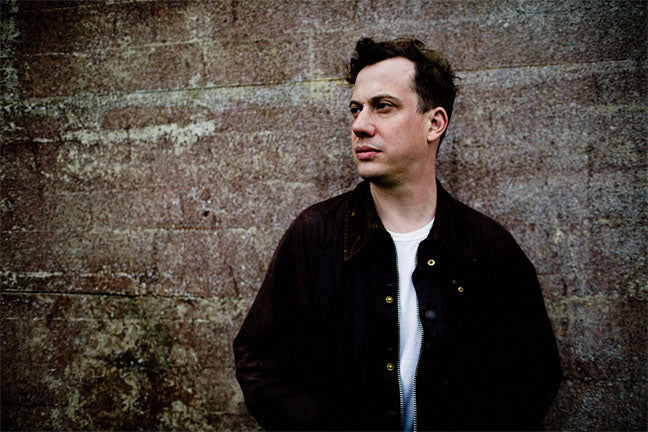It was perhaps unusual to grow up with the fear that indulging in things I enjoyed might come punished with eternal damnation. I belonged to a Christian family that, though not teetotal, was far from boozy. Our particular brand of the faith was Methodism, a denomination with its roots in the temperance movement, and it was only during my childhood that Methodist ministers like my dad were even allowed to have alcohol in the house. Even then the cupboards were pretty dry, as much because we didn’t have any money as for theological reasons. There was a decanter of sherry (I loved to sniff the rich blend of wood and sweetness in the cork) and perhaps wine (biblical, Christ-approved) if my parents had friends round for dinner. Beer I associated with the rich fug of blokes and snouts that wafted from pubs into the street, or the sour stink in holiday camp bars repurposed as churches during Christian away weeks. Beer was alien and unholy, and therefore held a certain allure. Nevertheless, my early teenage rebellion was never conducted via drinking alcohol, which was easily caught and punished, but sex, and the struggle to accept who I was as a queer man against the judgement of the Lord and homophobic 90s culture alike. Ironically enough, it was the latter that ended up defining my taste in drink.
I spent my teenage years in St Albans, a superficially genteel place, but during the mid-90s a satellite town that had such a reputation for Friday night violence that The Face magazine wrote an article about it. Large former coaching inns, dating from the time when the place was a popular stop along the ancient Watling Street, became some of Britain’s first superpubs. Their large capacity combined with the fashion for strong continental lager and the UK’s arcane licensing laws meant that come kicking out time, the town centre filled with pissed up angry geezers, a minority of whom would take it upon themselves to try and batter my friends and I, largely for dressing like young goth rough trade in ladies’ blouses, long or dyed hair, tight flares and little jackets. This threat of violence from these oafs usually came after the tragically contradictory justification that we’d been ogling their partners, were “poofs”, or both.
This meant that for late teenage drinking we had to seek out safe spaces in the smaller, quieter pubs scattered around the town centre, all of which served excellent ale, no doubt helped in part by St. Albans being the home of the Campaign For Real Ale, the headquarters of which were almost opposite dad’s church. I learned to drink on ale. It was easy, cheap, tasty, and didn’t seem to make me noticeably drunk or hungover. My rejection of lager was also an ideological one, as if by refusing to drink it I was also rejecting testosterone, which I imagined flowing through the veins of the town blokes in alchemical bond with Stella Artois. By drinking bitter, I was placing distance between myself and a hated masculinity that was aggressive, bigoted and threatening.
Those views have passed down the urinal of naïve and pretentious youth, but my love of ale has endured over the quarter of a century since. Outside of pubs, I’ve gobbled down gallons of lager in bottles in nightclubs, crisply-chilled stubbies from European supermarkets, generic corporate piss at gigs and football matches, six-for-a-fiver tins on the sofa when I’ve been skint. But that kind of drinking has always been when I can’t get anything better and has often had an air of the desperation to it, a need for inebriation to forget or for fuel. Ale, though, is perfect for context in which I most enjoy drinking: comfortably sat down for a long conversation.
This tends to lend itself to a certain type of pub, one where good care of the ale extends to a warmth among the clientele. The pubs I grew up were architecturally nondescript and lacked a quaint, historic atmosphere, were often brightly lit and unfussy, but they were places where you could end up talking bollocks through lock-ins, where as someone who’d grown up in quite a sheltered environment, I learned how to argue, interact and joke with the secular adult world.
There’s something about ale that suits this kind of interaction. Too many might make you feel sloshy, but the warm glow it washes through the mind lends itself to loose chat, debate and learning. One of my most important and enduring friendships was founded in the pubs of Norwich in the late 90s, places like the Eaton Cottage and the Coach & Horses, especially in the latter’s back room of leather booths lit with gas lamps, over endless pints of Woodforde’s Wherry. The same pal, who was born in Sussex, introduced me to the sainted nectar of Lewes’ Harvey’s brewery and over the past two decades our conversations have continued in their London pub, the Royal Oak in Borough. I love Harvey’s for the versatility of their beers, how there is one for all occasions: the familiar, malty comfort of the Best Bitter, slightly more robust autumnal richness in the Old Ale, in summer the dangerously refreshing Olympia and perhaps best of all the lunatic potential of the 5.5% Bonfire Boy that goes so perfectly with the psychedelic otherworldliness of Lewes’ annual November 5th parade.
My enthusiasm for Harvey’s sums up my attitude towards beer and its one that I see reflected in other aspects of life. I love music and literature from countless genres, but it tends to be one or two artists from each form that I end up obsessed with. I am similarly sceptical of everyone suddenly jumping on some improbably new fad in booze as much as I am music or writing, which is why I can’t get on with sours that taste like Jif have brought out a new grapefruit kitchen cleaner for a promo at the Co-Op, or stouts as sickly as a pint of cold-hot-chocolate. Why either pretend to like the Emperor’s new clothes on one hand, or wallow in the stale dregs on the other, if you can spend time with sound, beer, writing, whatever, in its purest, most perfect form? In London, this can make good beer (and by extension my kind of pubs) hard to find in this day and age, where ale is often an afterthought, festering dank and unwanted in its casks and pipes.
Happily, there is ley line of ale that extends out from the Royal Oak in Borough towards the north east, across the Thames, through the East End and out into Essex. Within a few metres of this invisible mark on the map you can find three of the greatest boozers in England, unified by the provision of good cask beer. They’re the sort of unpretentious places where you can sit and chew the world over with a few pints and a couple of bags of scratchings. There’s the Pride of Spitalfields on Heneage Street, a last bastion of East End pub tradition where you’re always guaranteed a decent pint of Brewers Gold, one of Essex’ finest brews. Then up to Highams Park by the North Circular (the psychic boundary between London and Essex) and my local, a new micropub called the Stag & Lantern. This one room establishment used to be a nutritionists shop and before that a travel agents, a tiny space that nevertheless manages to serve a far greater variety of quality booze than the vast majority of established pubs for miles around. Finally, out to the M25 and The Woodbine, a roadside hostelry run by a veteran of the acid house scene, best reached after a long walk through Epping Forest.
Recently I did an event at the Christian Greenbelt festival discussing masculinity, sexuality and concepts of sin. Were it not for having to leave for another event, I would have stayed for their regular pub session of beer and old hymns. These days, I’m pretty sure that my enthusiasm for ale no longer means I’m going to suffer the daemons of Hieronymus Bosch pouring burning oil from dimpled pint pots down my gullet for all eternity… though as my forty-fifth birthday approaches and my shirt buttons are increasingly challenged, the corporeal punishment for a skinful sometimes feels like it. Anyone got any Gaviscon?
Luke Turner is a writer and editor. He co-founded the influential music website The Quietus and has contributed to the Guardian, Dazed & Confused, Vice, NME, Q, Mojo, Monocle, Nowness, Somesuch Stories and the BBC among others. His first book, Out of the Woods, was shortlisted for the Wainwright Prize. He lives in London.

